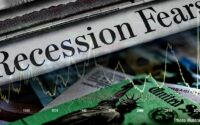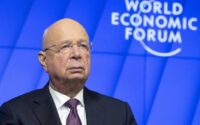‘Risks of recession were already increasing’ before Fed tightening
Recessionary risks arising from the ongoing labor shortage and rising prices exist independently of the Fed’s monetary strategy, Jordan Jackson, global market strategist at JPMorgan Asset Management told Yahoo Finance Live in an interview Thursday morning.
“I think the reality is, if the Fed just sat down and did absolutely nothing with interest rates and monetary policy, the risks of recession were already increasing,” Jackson said. “We’re effectively running out of workers, and so a lack of labor supply here in the market today is certainly going to have a slowing effect on growth tomorrow.”
Combine the labor shortage with the prospect of high inflation potentially curtailing demand and the economy appears to be headed towards a recession even before taking into account an aggressive Federal Reserve’s tightening policy, Jackson said.
The Fed kickstarted the first round of interest rate increases last month, raising the rate into the 0.25% -0.5% range for the first time in three years. Markets initially fell slightly in reaction to the announcement, but have since risen past levels seen at the beginning of March.
As prices rise and companies continue to desperately search for workers, the country rolls past full employment levels. Thursday’s weekly report from the labor department revealed that the number of jobless claims fell to its lowest level since 1968.
“I think what this means is that we are essentially shifting into late cycle,” Jackson said. “When we look at labor market, we look at inflation, now when we start to bake in the tightening financial conditions … we’re certainly moving into sort of a late cycle-style economy.”
This means returns in the near future will be lower than previous averages, Jackson said, and current rallies are unlikely to continue at this rates.
Predictions of a recession have gained greater support during the past few months, as the precarious conflict in Ukraine threatens to hurt global energy production and slowdown the global economy.
The spread between the 2-year Treasury yield and the 10-year Treasury yield closed to zero last week, prompting a yield curve inversion. Though this phenomenon is commonly seen as a predictor to a recession, economists note that that circumstances of the current economy are different.
“We think investors really need to have a balanced approach as you approach late cycle,” Jackson said. This is a market where you need good, active managers that can go in, identify good companies that are trading below their fundamentals, and that can generate alpha for investors over the next 12-18 months.”
Historically, he added, markets continue to perform even as the economy heads into the late cycle period.
“When we look historically at some of that data, markets tend to rally pretty strongly after that initial curve inversion,” Jackson said. “So, I still think equity markets can preform, it’s really about that runway and how far we may be away from that recession.”
Ihsaan Fanusie is a writer at Yahoo Finance. Follow him on Twitter @IFanusie.
Follow Yahoo Finance on Twitter, Instagram, YouTube, Facebook, Flipboard, and LinkedIn
[ad_2]
Source link


